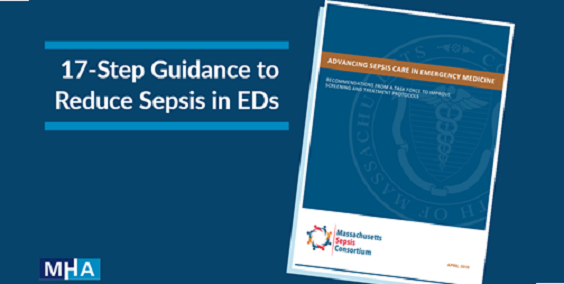Sepsis Overview:
Sepsis is diagnosed in over one million patients each year in the United States (Hall et al., 2011). Furthermore, septicemia treatment resulted in an estimated $20.3 billion or 5.2 percent of the total cost for all hospitalizations and was the most expensive condition treated in the year 2011 (Hall et al., 2011). Not only is sepsis expensive and prevalent, patients diagnosed with sepsis are estimated to have a mortality rate of 28 to 50 percent (Angus, 2001). Learn more from Carl Flatley who founded the Sepsis Alliance after the death of his daughter, Erin.
The risk of mortality and urgency when treating all stages of sepsis, from sepsis to septic shock, drove the development of the three and six hour bundles, which are approved by the National Quality Forum as the first scientifically sound, valid and reliable elements for the care of the septic patient (Dellinger, 2013). These bundles prompt the completion of the indicated tasks within the first three to six hours after the identification of septic symptoms – 100 percent of the time.
What is Sepsis?
Sepsis is the body’s overwhelming and life-threatening response to infection that can lead to tissue damage, organ failure, and death. In other words, it’s your body’s over active and toxic response to an infection.
Your immune system usually works to fight any germs (bacteria, viruses, fungi, or parasites) to prevent infection. If an infection does occur, your immune system will try to fight it, although you may need help with medication such as antibiotics, antivirals, antifungals, and antiparasitics. However, for reasons researchers don’t understand, sometimes the immune system stops fighting the “invaders,” and begins to turn on itself. This is the start of sepsis.
What Causes Sepsis?
Any type of infection that is anywhere in your body can cause sepsis. It is often associated with infections of the lungs (e.g., pneumonia), urinary tract (e.g., kidney), skin, and gut. An infection occurs when germs enter a person’s body and multiply, causing illness and organ and tissue damage.
Life After Sepsis
What are the first steps in recovery?
After you have had sepsis, rehabilitation usually starts in the hospital by slowly helping you to move around and look after yourself: bathing, sitting up, standing, walking, taking yourself to the restroom, etc. The purpose of rehabilitation is to restore you back to your previous level of health or as close to it as possible. Begin your rehabilitation by building up your activities slowly, and rest when you are tired.
Surviving Sepsis Campaign
The international Surviving Sepsis Campaign (SSC) is a joint initiative of the Society of Critical Care Medicine (SCCM) and the European Society of Intensive Care Medicine (ESICM), led by multidisciplinary international experts who are committed to reducing mortality and morbidity from sepsis and septic shock, which are leading causes of death worldwide.
Sepsis Alliance Presents:
Sepsis Fundamentals
Sepsis Fundamentals is a free, multi-part educational program from Sepsis Alliance designed to strengthen healthcare professionals’ foundational knowledge of sepsis, the leading cause of death in U.S. hospitals. Through evidence-based training on recognition, diagnosis, and management, the course equips nurses, physicians, and other providers to improve survival rates and patient outcomes. Serving as a springboard to more advanced training, it also emphasizes recovery, quality improvement, and multidisciplinary teamwork.

Surviving Sepsis Campaign
The international Surviving Sepsis Campaign (SSC) is a joint initiative of the Society of Critical Care Medicine (SCCM) and the European Society of Intensive Care Medicine (ESICM), led by multidisciplinary international experts who are committed to reducing mortality and morbidity from sepsis and septic shock, which are leading causes of death worldwide. Click here for more information....» Full Article
Sepsis Alliance
Sepsis has been named as the most expensive in-patient cost in American hospitals in 2014 averaging more than $18,000 per hospital stay. With over 1.5 million sepsis hospital stays in 2014 per year, that works out to costs of $27 billion each year. Studies investigating survival have reported slightly different numbers, but it appears that on average, approximately 30% of patients diagnosed with s...» Full Article
Global Sepsis Alliance
Global Sepsis Alliance has produced a library of Sepsis Information Guides on dozens of topics. These guides are high resolution and can be printed and distributed to patients, co-workers, and other professionals. Available guides include Life After Sepsis, Aging, Amputations, Appendicitis, C. difficile, COPD, Cellulitis, Children, Dental Infections, Diabetes, Flu, HAI, HIV/AIDS, Immune System, K...» Full Article
END SEPSIS

Task Force Issues 17-Step Guidance to Reduce Sepsis in EDs
The Massachusetts Sepsis Consortium, led by the Betsy Lehman Center for Patient Safety, has released a report -- Advancing Sepsis Care in Emergency Medicine -- containing 17 recommendations that hospitals and emergency departments can undertake to reduce incidences of sepsis. Sepsis – the body’s extreme response to an infection that can lead to rapid tissue damage, organ failure and death ...» Full Article
Massachusetts Sepsis Consortium
Every 2 minutes someone dies from sepsis in the U.S. – that’s more than from prostate cancer, breast cancer and AIDS combined. Sepsis is a medical emergency in the Commonwealth and the Massachusetts Sepsis Consortium brings together leading experts and advocates from across the state to raise awareness and save lives. The Massachusetts Sepsis Consortium brings together a group of organizati...» Full Article
CDC’s Get Ahead of Sepsis Campaign
Get Ahead of Sepsis is a national effort to improve sepsis early suspicion and recognition and timely treatment, as well as prevent infections that could lead to sepsis.
»Full ArticleTranslate »
